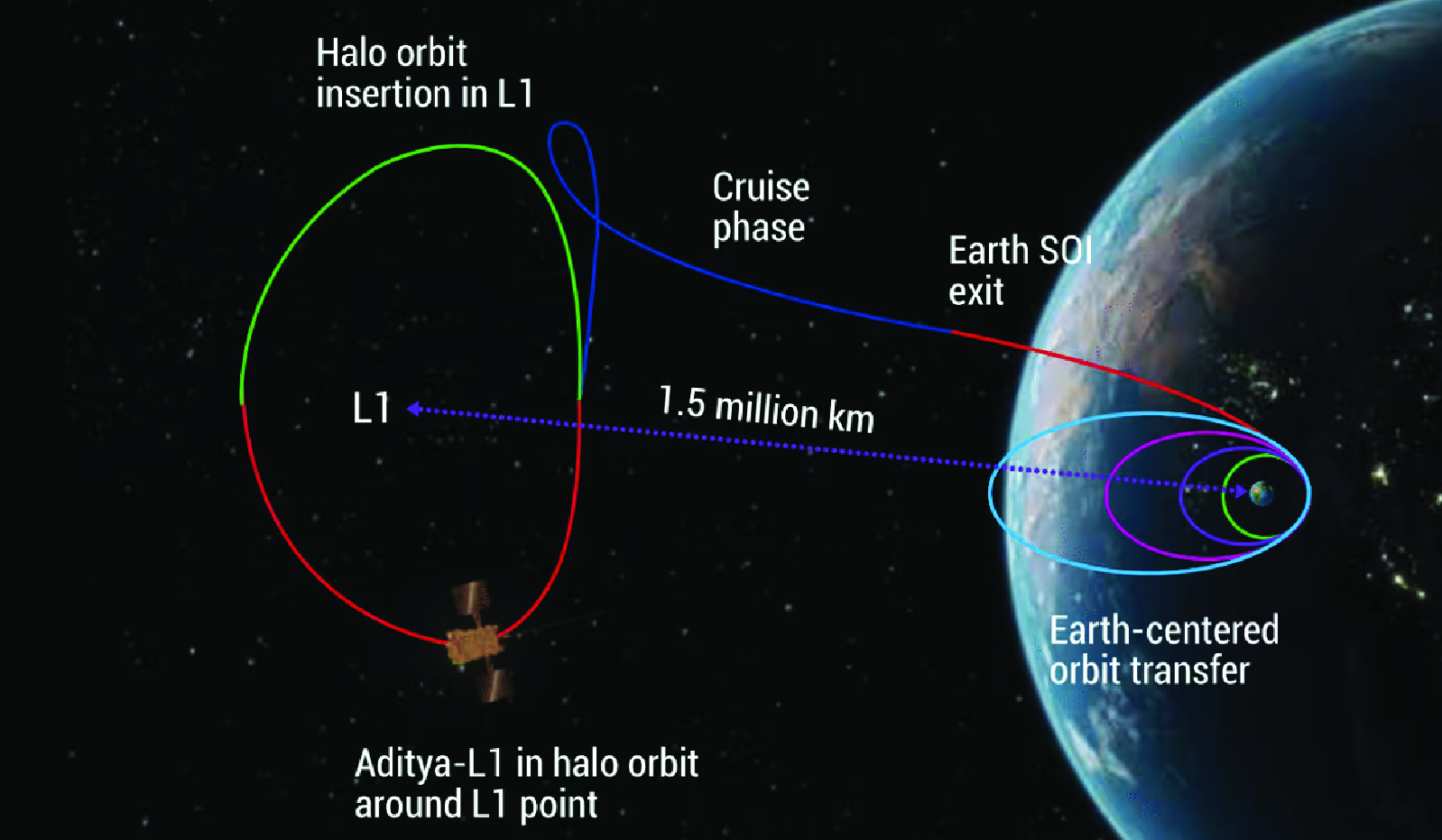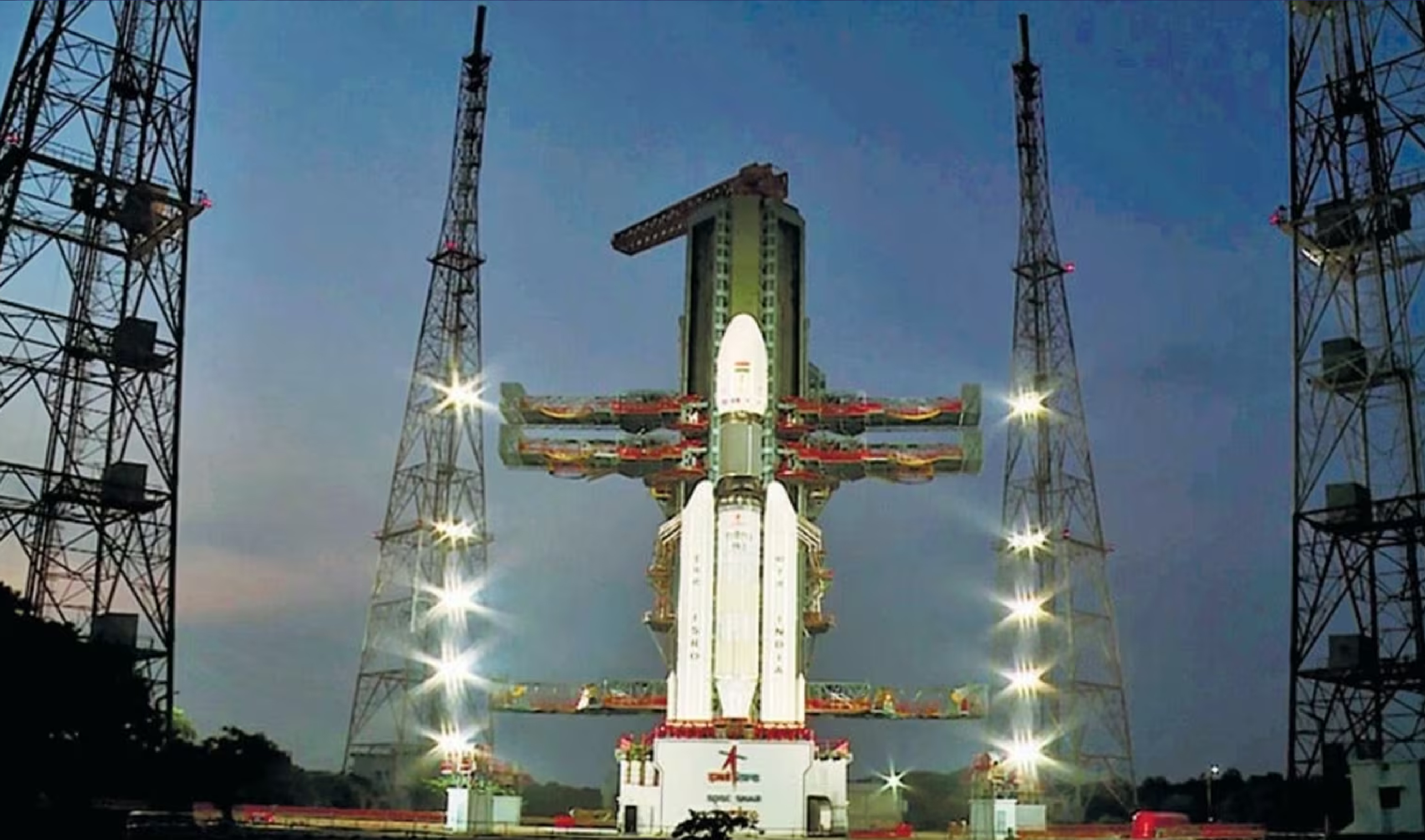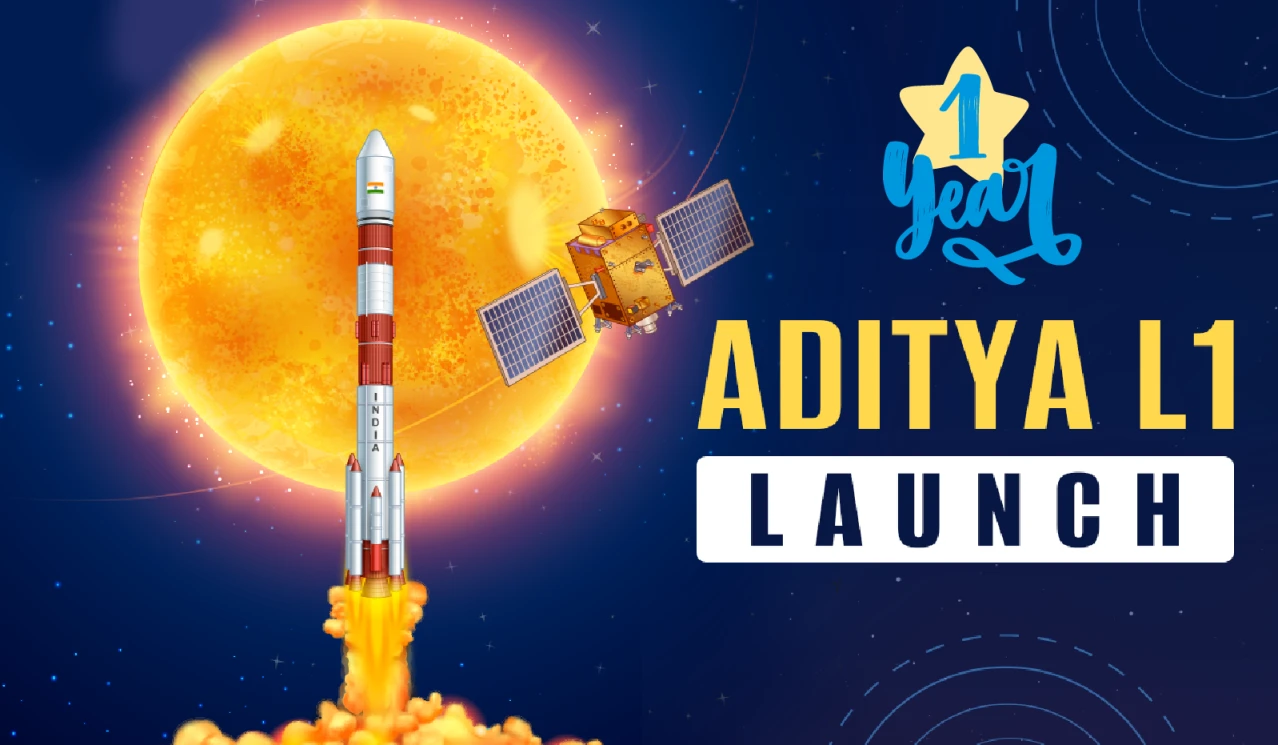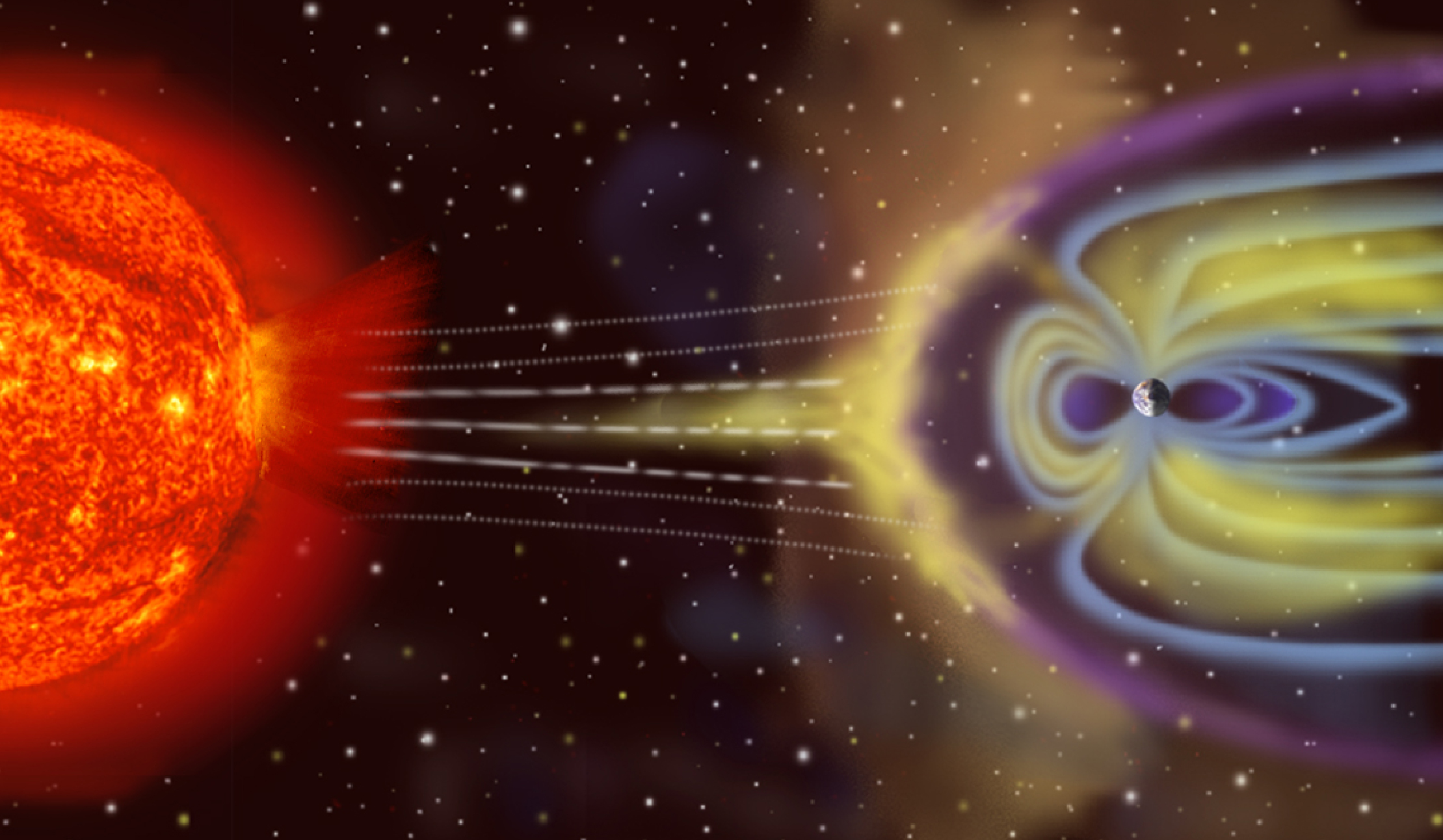Solar Ultra-violet Imaging Telescope (SUIT) payload onboard Aditya-L1 observed an X6.3-class solar flare, which is one of most intense categories of solar eruptions.
How Aditya-L1 study Solar flares?
- During solar flare that particular region of Sun generating flare becomes brighter in UV and X-ray. Aditya-L1 instruments such as SUIT, SoLEXS and HEL1OS can study these brightening.
- SUIT: To image Solar Photosphere and Chromosphere in near Ultra-violet (UV) and, to measure solar irradiance variations in near UV.
- SoLEXS and HEL1OS instruments: Monitor solar X-ray emissions.
Aditya-L1 Mission
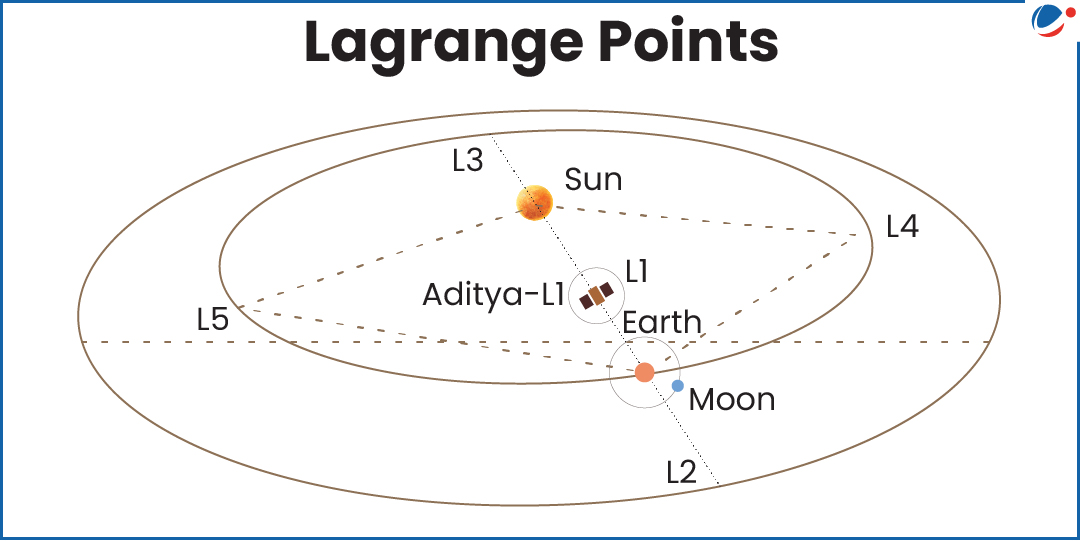
- Mission Launch: First Indian space mission to study Sun launched in September, 2023.
- Location: Placed in a halo orbit around Lagrange point 1 (L1) of Sun-Earth system for continuously viewing Sun.
- Lagrange Points are positions where gravitational pull of two large masses precisely equals centripetal force required for a small object to move with them.
- Objectives: Study of Solar upper atmospheric (chromosphere and corona) dynamics, Study of chromosphere and coronal heating, coronal Mass ejection etc.
- Payloads: Total seven payloads on-board.
- Remote Sensing Payloads: Visible Emission Line Coronagraph(VELC), Solar Ultraviolet Imaging Telescope (SUIT), Solar Low Energy X-ray Spectrometer (SoLEXS), High Energy L1 Orbiting X-ray Spectrometer(HEL1OS),
- In-situ observation Payloads: Aditya Solar wind Particle Experiment(ASPEX), Plasma Analyser Package For Aditya (PAPA), Advanced Tri-axial High Resolution Digital Magnetometers.
What are Solar Flares?
|




